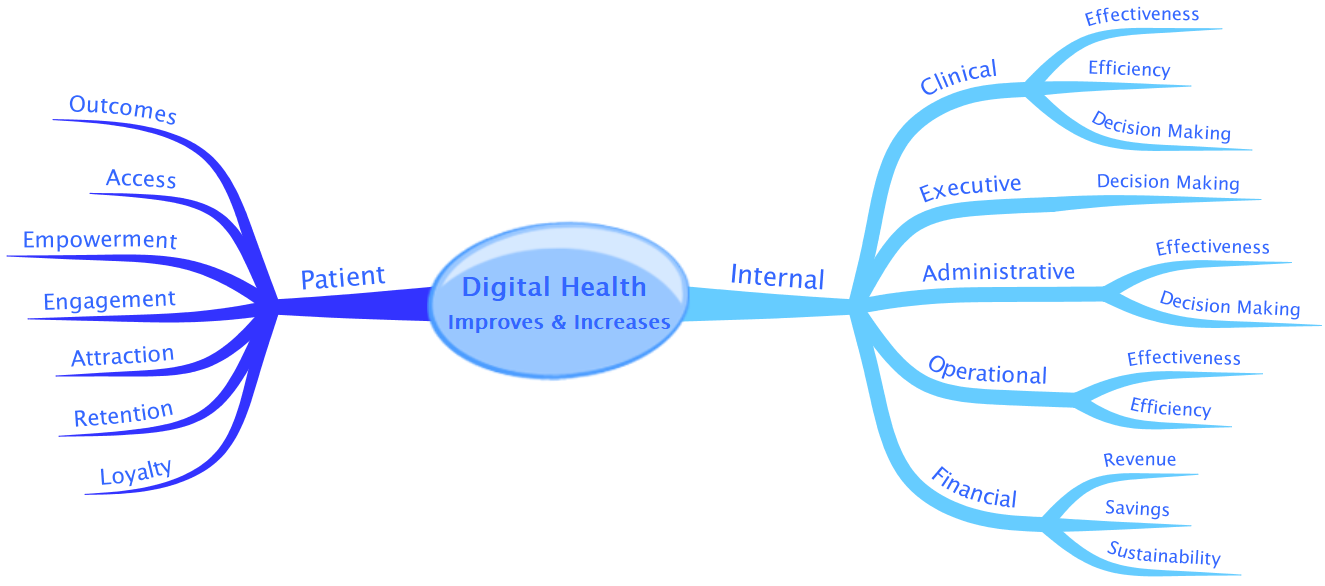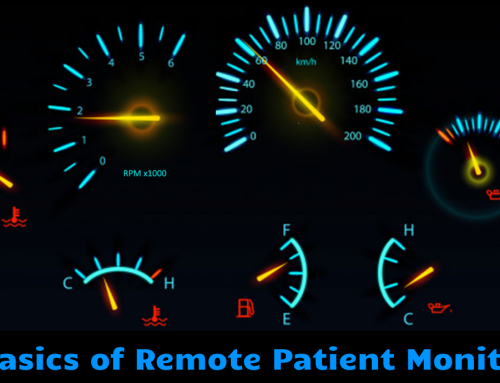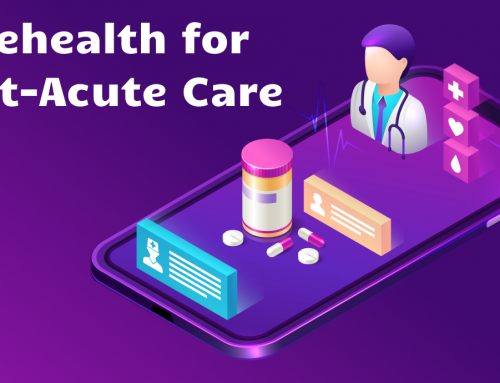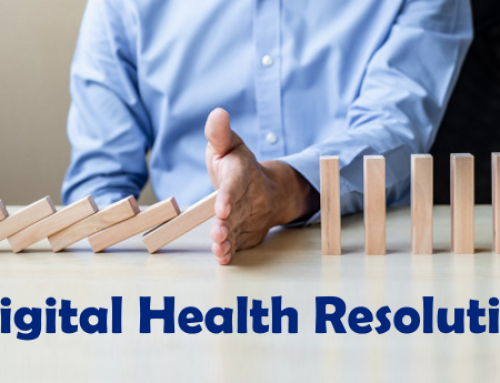These days “Digital Transformation” seems to be everybody’s favorite term. Yet few organizations and boards truly know what a digital transformation would actually look like in their organization, other than sensing that something should be done about it.
While other industries — manufacturing, finance, retail, sales, real estate, hospitality, transportation, travel, etc. — have embraced and are well on their way to fully integrating digital technologies into their businesses, healthcare’s adoption has mostly been mandated (oftentimes through agonizingly ill-advised regulations) and not very proactive.
Digital Health Strategy Drivers
Many healthcare organizations are now recognizing the need to do something more strategic, more proactive, and more effective with Digital Health than simply implementing the bare minimum. A multitude of drivers are pushing healthcare leaders to arrive at these insights. Here a just a few:
- Owing to a variety of societal dynamics, the role of the patient is changing from the subservient recipient of healthcare services to an empowered, educated healthcare consumer. This modern healthcare consumer is now expecting and demanding a very different level of service and free access to data and information than the patient of the past.
- The disparate technical systems that have been put in place over the past decades do not talk to each other. Clinicians cannot make good decisions because they can’t access critical data timely. Transforming the current set of technologies with a set of integrated solutions is the goal of many healthcare CIOs and CEOs and vitally important to frustrated clinicians.
- The analogous problem afflicts the C-suite. Organizations are now realizing that the vast trove of (electronic) data all their systems are generating — at huge expense — is not being put into context, and paired with experience, so it can be used for clinical, administrative, and operational decisions. Leaders thus rightfully demand that their hoard of hidden data be unearthed, analyzed, and harnessed to achieve the organization’s strategic objectives.
- Given the explosive increases in the cost of care from year to year, leadership must demand solutions that support all of the organization’s strategic objectives. Technology solutions, when selected and implemented correctly, can significantly improve effectiveness (doing the right things) and efficiency (doing things right), while opening up new revenue opportunities. Technologies poorly chosen or poorly utilized have the opposite effects.
- Between extensive consolidation on one hand and cost pressures on the other, competitive pressures over the past few years have increased in most markets by an order of magnitude. With the emergence of care solutions that no longer require a visit to the doctor’s physical office, the geographic boundaries that used to protect organizations have suddenly been eroded by telehealth and telemedicine services.
- As it has for decades, centuries, and millennia, medicine is constantly evolving. We have now reached a point where the speed and accuracy of technologies allow us to realize the vision of personalized medicine, where I, as a patient, am provided access to drugs optimized to my genetic profile. Replacement organs or bones are no longer templated, but build just for me. We can now explore the genetic code of the body’s microorganisms to detect, prevent and diagnose infections and other diseases. These advances also fall under the Digital Health umbrella and they provide a way to practice and deliver medicine that the modern healthcare consumer expects – otherwise, they will take most of their healthcare business elsewhere.
Digital Health Outcomes
Like all strategies, a Digital Health Strategy must prioritize outcomes to use the limited resources efficiently. That (digital) technologies are used to build solutions that achieve those outcomes is of secondary importance at best.
The diagram below depicts the improvements that a Digital Health Strategy, effectively implemented, can achieve. As with all good business strategies, a Digital Health Strategy must focus on the customer, the modern healthcare consumer. From the healthcare consumer’s perspective, there is a mix of evidence and hope that employing digital tools will help to improve health outcomes and increase access to health care; that it will empower and engage patients to become and stay well; and that we can leverage them to attract and engage patients to increase loyalty and retention.
From an internal perspective, Digital Health aims to improve efficiency, effectiveness and decision making at all levels, ultimately driving revenue and savings, the financial key performance indicators, leading to financial and organizational sustainability.



Ingenium’s Principles for Digital Health Strategy Development
So what approach should your organization follow to develop or improve it’s own Digital Health Strategy? The following list describes our six most important guiding principles that we apply as we work with healthcare organizations’ leadership teams to develop their Digital Health road map:
- There is no silver bullet. By itself, technology can never be the answer to a problem. It takes People + Process + Technologies to achieve “digital change”.
- Don’t put the horse behind the cart. Technology selection (the “horse”) should always be preceded by the identification and quantification of the needs (the “cart” to be pulled).
- You can’t copy 1:1. Healthcare organizations are as complex as living organisms of different species. A solution that may work in one healthcare organization, no matter how similar, may not yield the same results in your organization. Epidemiology, the leadership culture, the physician-nurses-administrator power balance, the socio-economic and demographic factors of the workforce and of your targeted healthcare consumers, the payor mix, and your state legislation all have a significant impact on what solution will work.
- A great technology solution is necessary, but not sufficient. While you might get a mediocre solution to work, just selecting a great technology alone will not guarantee success.
- The Only Thing That Is Constant Is Change. For any Digital Health solution to be adapted, attitudes have to change, workflows have to change and, in most cases, the way that the clinical and medical staff think about Healthcare delivery has to change. The change will be constant as the technology in use will continue to evolve.
- Culture eats Strategy for Breakfast. An overused quote, but nonetheless true. Turning people’s (and especially physicians’) energy around resistance to change into positive support is the single most important ingredient for the success of any change initiative, but particularly critical in the implementation of Digital Health solutions.
What other drivers are creating the need for a Digital Health Strategy for your organization? Which principles have you successfully employed? Which principle is currently holding your organization back from reaping the full benefits of a pragmatic Digital Health strategy? Let us know in the comments.








To receive articles like these in your Inbox every week, you can subscribe to Christian’s Telehealth Tuesday Newsletter.
Christian Milaster and his team optimize Telehealth Services for health systems and physician practices. Christian is the Founder and President of Ingenium Digital Health Advisors where he and his expert consortium partner with healthcare leaders to enable the delivery of extraordinary care.
Contact Christian by phone or text at 657-464-3648, via email, or video chat.







Leave A Comment